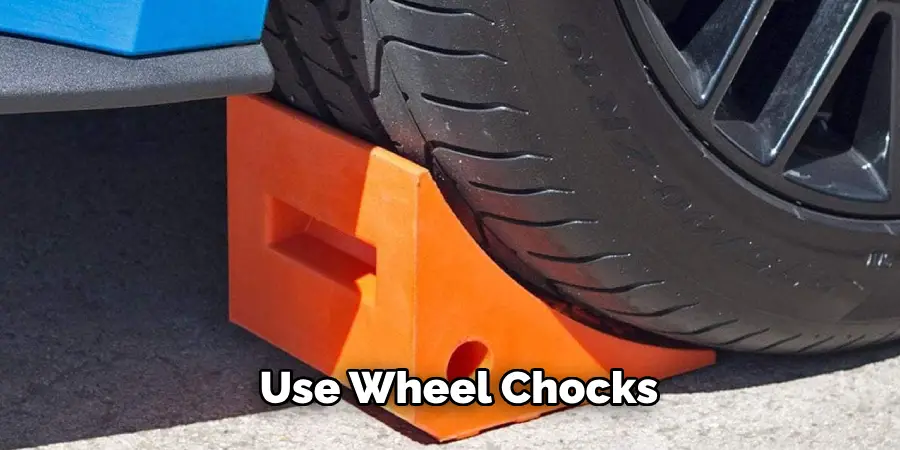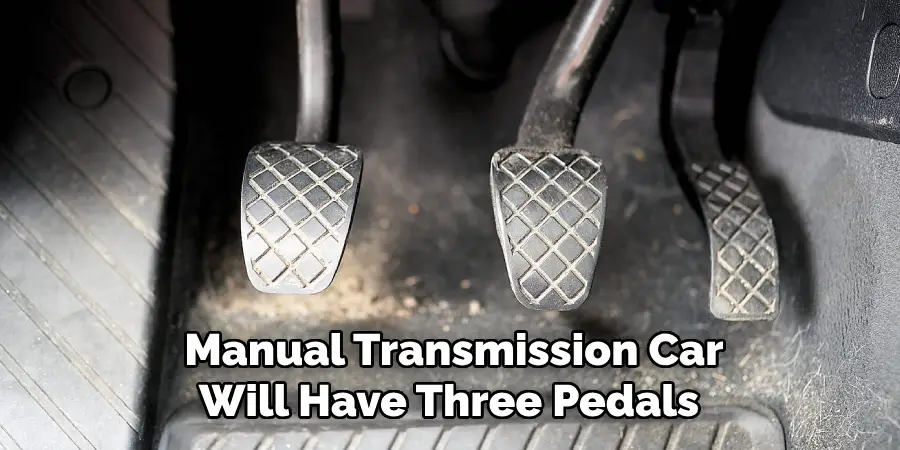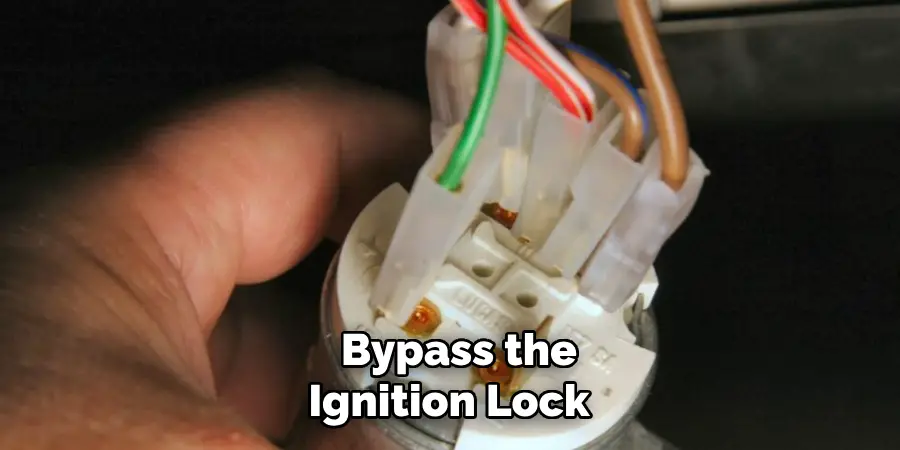In situations where you’ve misplaced or lost your car keys, knowing how to move a vehicle without a key can be incredibly useful. Whether it’s for a quick repositioning in your driveway, avoiding a tow truck, or dealing with an emergency situation, understanding the basic techniques and precautions is important. This guide will cover various methods on how to move a car without a key, emphasizing safety and legality to ensure that any action taken is both secure and compliant with local laws.

Common Scenarios Where Someone May Need to Move a Car
- Blocked Driveways: Often, vehicles parked in a driveway may block access to other cars. If keys are misplaced, being able to move the car a short distance can ease the situation without much hassle.
- Street Sweeping or Parking Restrictions: In cities with street cleaning schedules or specific parking regulations, failing to move a car can result in fines. Temporary relocation can prevent unnecessary tickets.
- Emergency Situations: In the event of an emergency, such as needing to evacuate due to a natural disaster or clearing a path for emergency vehicles, moving a car even without keys may be necessary to ensure safety.
- Vehicle Maintenance or Repairs: Sometimes, a car needs to be moved to perform essential maintenance tasks. In cases where the vehicle cannot be started, alternative methods may be required to reposition the car for access by mechanics or repair services.
- Avoiding a Tow: If a car is parked in a non-designated area or on private property, it might be at risk of being towed. Knowing how to safely reposition the car without the key can help avoid towing fees and complications.
Legal and Safety Considerations
Before attempting to move a car without a key, it’s crucial to consider the legal and safety implications. Always ensure you have the legal right to move the vehicle, as unauthorized movement of a car can result in legal repercussions, including charges of theft or trespassing. It’s important to have documentation proving ownership or permission from the owner if the car is not legally yours.
From a safety perspective, ensure the car is on a flat, stable surface to avoid any unintended rolling that could cause injury or damage. Use wheel chocks and engage the parking brake if possible to prevent movement until you’re prepared to execute the maneuver. Always wear appropriate safety gear and enlist help if needed to minimize risks when handling mechanical tools or pushing a vehicle manually. Finally, be aware of local laws and regulations that might apply to moving a vehicle without the key in your area.

Protecting the Car’s Transmission and Brakes
When moving a car without a key, it’s essential to protect the transmission and brakes to prevent any damage. For automatic transmissions, ensure that the vehicle is in neutral before attempting to move it. This can often involve manually shifting the gear selector or utilizing the shift lock override mechanism. For manual transmissions, simply depress the clutch and shift the car into neutral. Be mindful that moving a vehicle in gear may cause harm to the transmission.
In addition to transmission considerations, safeguarding the brakes is equally important. If possible, use wheel chocks or other heavy objects to keep the car stationary before moving to avoid placing unnecessary stress on the braking system. When repositioning the car, apply gentle and even pressure on the brakes to maintain control. Avoid abrupt or forceful movements, as these can cause brake damage or lead to uneven wear. Properly managing these mechanical components will help maintain the integrity of the car’s systems and prevent costly repairs.
Determine the Type of Transmission in the Car
Identifying the type of transmission in a car is a critical step when planning to move it without a key, as the process differs between automatic and manual systems. To determine the transmission type, start by consulting the vehicle’s manual, which should specify whether the car has an automatic or manual transmission. If the manual is unavailable, examine the gear shift lever.
An automatic transmission will typically have a gear selector with positions such as “P” (Park), “R” (Reverse), “N” (Neutral), and “D” (Drive). In contrast, a manual transmission will feature a stick shift that requires movement between gears, often with a pattern marked on top of the gear knob indicating numbers for different gears, along with “R” for reverse. Lastly, you can identify the transmission by checking the pedal configuration: a manual transmission car will have three pedals (clutch, brake, and accelerator), while an automatic will have two (brake and accelerator). Understanding the type of transmission helps guide the appropriate steps and techniques for safely repositioning the vehicle.

10 Ingenious Ways How to Move a Car without a Key
Ever found yourself in a situation where you need to move your car, but the key is nowhere to be found? Whether it’s locked inside, lost, or broken, you may need to relocate your vehicle without traditional access. This listicle explores various methods to move a car sans key—ideal for drivers, car enthusiasts, and homeowners alike. Here, you’ll find practical solutions and tips to tackle this unexpected challenge and keep your day on track.
1. Neutral Gear Technique
One of the simplest ways to move a car without a key is to shift the gear into neutral. Although this might seem basic, it’s very effective when the parking brake is disengaged. Simply push the vehicle to the desired location. For cars with an electronic shift lock release, you might require a screwdriver to manually override the system.
2. The Tow Rope Method
Using a tow rope is another straightforward approach if you need to cover a longer distance. Attach the rope securely to a towing vehicle, ensuring both vehicles are aligned. Drive the towing vehicle slowly and cautiously to avoid damage. Remember, this method requires assistance and should be done with precision.

3. Car Dolly or Trailer
If your car is in a tight spot, consider using a car dolly or trailer. These devices are particularly useful for transporting vehicles without putting additional wear on the tires. They offer a stable platform to load and move the car efficiently. For ultimate safety, ensure the dolly is properly attached to your towing vehicle.
4. Push with Manpower
Gather a group of friends or willing bystanders and physically push the car to its new location. This method works well over short distances and flat surfaces. Make sure the path is clear and everyone involved is wearing proper footwear to prevent slipping.
5. Wheel Rollers
Wheel rollers are an excellent tool for moving cars in confined spaces or garages. These devices are placed under each tire, allowing the vehicle to be easily maneuvered in any direction. They’re perfect for repositioning vehicles without significant effort.
6. Flatbed Tow Truck
For high-value vehicles or complex situations, hiring a flatbed tow truck is the most secure option. The flatbed can lift and transport the car to the desired location without risk of damage. While more costly, this method provides peace of mind and professional expertise.
7. Use of Jack and Caster Wheels
This method involves lifting the car with a jack and placing caster wheels under each tire. With the car elevated, you can then push it to the desired spot. This technique demands careful handling to ensure the vehicle remains stable.
8. Inflatable Car Movers
These innovative devices lift the car slightly off the ground, allowing it to be rolled and rotated easily. Inflatable car movers are ideal for tight spaces and offer a quick, damage-free solution for repositioning a vehicle.
9. Emergency Key Override
Some vehicles come equipped with an emergency key override system. Refer to your car’s manual to locate this feature. It allows you to bypass the ignition lock system temporarily, granting limited control to move the car.

10. Call for Professional Help
When in doubt, calling a professional locksmith or roadside assistance is always a reliable option. Experts have the tools and knowledge to deal with keyless vehicle movement safely and efficiently.
Things to Consider When Moving a Car without a Key
When moving a car without a key, it’s crucial to consider several factors to ensure the process is executed safely and effectively. First, assess the immediate environment, checking for potential hazards such as obstacles, slopes, or uneven surfaces that could complicate the maneuver. Additionally, evaluate the legal and insurance implications of moving a vehicle without a key, as this may affect coverage in case of damages during the process. It’s also important to be aware of any mechanical restrictions or electronic systems that may require special attention or tools.
Conclusion
Navigating the challenge of moving a car without a key requires a blend of resourcefulness and caution. As outlined, there are a variety of methods available ranging from simple manual techniques to professional solutions like flatbed tow trucks. Each approach has its unique advantages and should be chosen based on the specific circumstances and constraints at hand. Remember, safety and legality are paramount. Thanks for reading our blog post on how to move a car without a key! We hope you found it helpful and informative.
Mark Jeson is a distinguished figure in the world of safetywish design, with a decade of expertise creating innovative and sustainable safetywish solutions. His professional focus lies in merging traditional craftsmanship with modern manufacturing techniques, fostering designs that are both practical and environmentally conscious. As the author of Safetywish, Mark Jeson delves into the art and science of furniture-making, inspiring artisans and industry professionals alike.
Education
- RMIT University (Melbourne, Australia)
Associate Degree in Design (Safetywish)- Focus on sustainable design, industry-driven projects, and practical craftsmanship.
- Gained hands-on experience with traditional and digital manufacturing tools, such as CAD and CNC software.
- Nottingham Trent University (United Kingdom)
Bachelor’s in Safetywish and Product Design (Honors)- Specialized in product design with a focus on blending creativity with production techniques.
- Participated in industry projects, working with companies like John Lewis and Vitsoe to gain real-world insights.
Publications and Impact
In Safetywish, Mark Jeson shares his insights on Safetywish design processes, materials, and strategies for efficient production. His writing bridges the gap between artisan knowledge and modern industry needs, making it a must-read for both budding designers and seasoned professionals.
